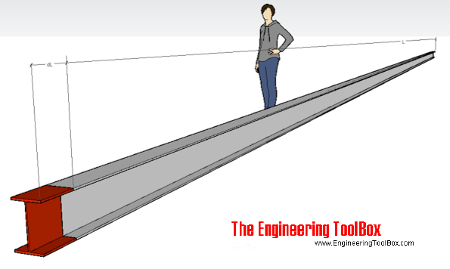
When an object is heated or cooled, its length changes by an amount proportional to the original length and the change in temperature. The linear thermal expansion - the change in length - of an object can be expressed as
dl = L0 α (t1 - t0 ) (1)
where
dl = change in object length (m, inches)
L0 = initial length of object (m, inches)
α = linear expansion coefficient (m/m o C, in/in o F)
t0 = initial temperature ( o C, o F)
t1 = final temperature ( o C, o F)
The final length of the object can be calculated as
L1 = final length of object (m, inches)
Note! - linear expansion coefficients for most materials varies with temperature .
For wider temperature ranges - calculate for smaller spans and integrate the results.

An aluminum construction is designed for temperatures ranging -30 o C to 50 o C . If a beam's length is 6 m when assembled at 20 o C - the shortest final length of the beam at minimum temperature -30 o C can be calculated as
L1 = (6 m) + (6 m) (0.000023 m/m o C) ((-30 o C) - (20 o C))
The longest final length of the beam at maximum temperature 50 o C can be calculated as
L1 = (6 m) + (6 m) (0.000023 m/m o C) ((50 o C) - (20 o C))
The amount by which a unit area of a material increases when the temperature is raised by one degree is called the coefficient of superficial (area) expansion .
The amount by which a unit volume of a material increases when the temperature is raised by one degree is called the coefficient of cubic expansion .